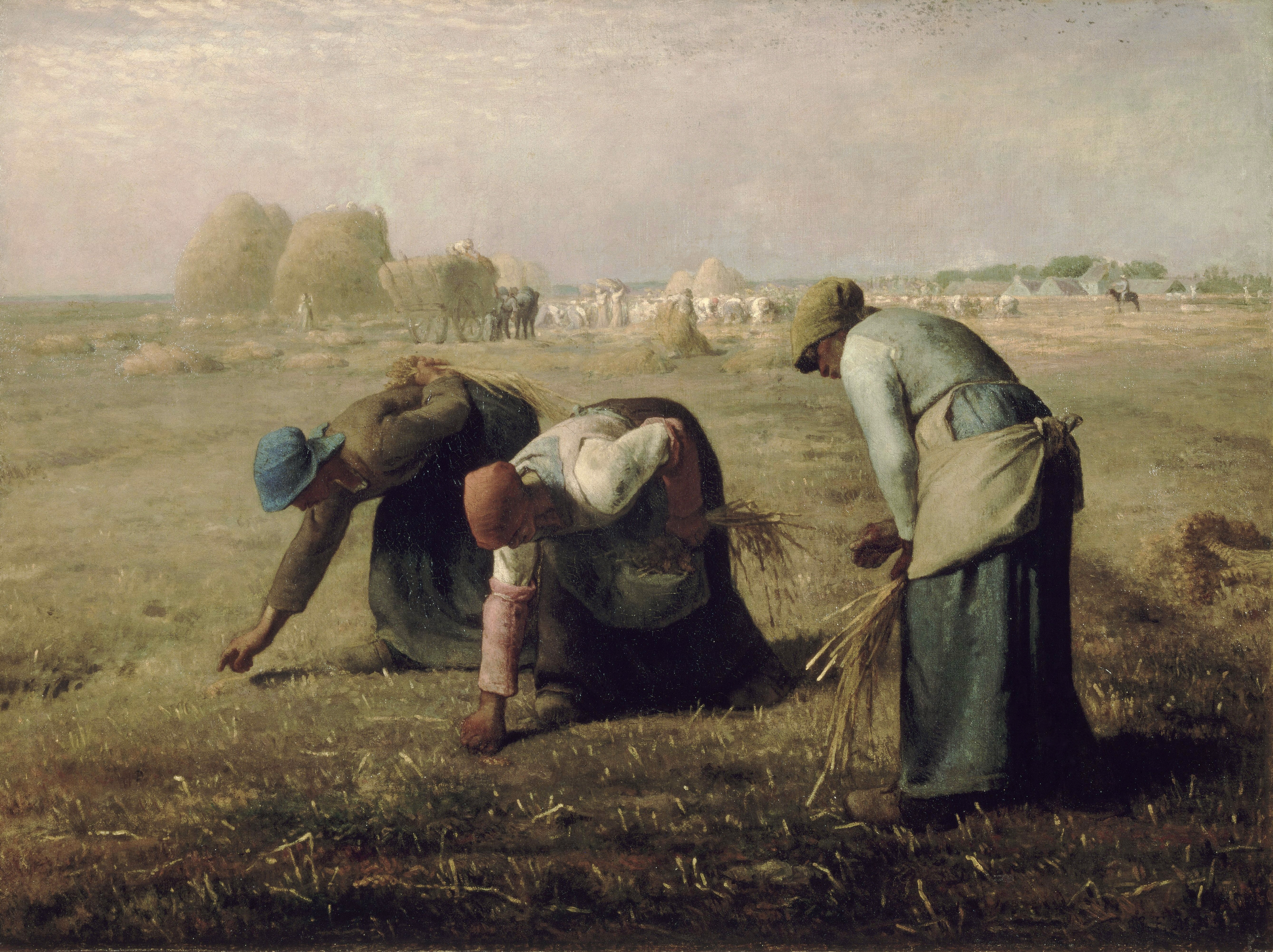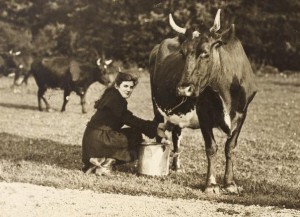A Man’s Right to Land
At first glance, one does not immediately
identify Ron Howard’s film “Far and Away” (a tale of an Irish immigrant’s
hilarious and sometimes heart wrenching journey into American culture in the
late 1800’s) as a significant cornerstone of American agriculture in film. In
fact, many still remember the film only for Tom Cruise’s shirtless boxing
matches when it should be renowned for its accurate depiction of the effect
this time period had on America’s Agricultural industry. Despite the story’s
origins beginning in rural Ireland and having a very distracting Tom Cruise as
its main character, “Far and Away” creates an almost exact parallel to the
historical impacts the “American Dream” had on American agriculture, which
includes; ideology of Manifest Destiny with its cultural impacts, the surge in
the agricultural working force made up of immigrants, and The Great Oklahoma
Land Race of 1893.
The story’s main character, a hard working Irish
potato farmer named Joseph Donnelly, fell victim to (as many Irishman did at
the time) his landlord’s greed after a couple of failed seasons, which led to the
death of his father. While on his death bed, Joseph’s father implanted a
thought in his son’s mind that would later spawn into Joseph’s own contribution
towards the Manifest Destiny movement in America. Frederick Merk, professor emeritus of American history at
Harvard University compares Manifest Destiny to a Mission, and as Alexander
DeConde writes in his review of Merk’s writings, he says, “This ideal of
Mission, meaning that America was the light of liberty for Europe, indeed for
the world, was meant as a divine growth both culturally and economically for
the benefit of the nation.” (DeConde) Joseph saw this light in the final
moments of his father’s life, and instilled in him this inspiring thought; “Without
land, man is nothing.” This saying inspired Joseph to leave Ireland and go to
America, seeking the American dream, which also inspired many others to seek
out their own land and destiny in America, to farm and begin a new life.
While entering
America, Joseph, along-side thousands of other Irish men and women, were
quickly lost in translation and taken advantage of. What seemed like a very
obtainable dream quickly became a nearly insurmountable challenge. “Nearly 12
million immigrants arrived in the United States between 1870 and 1900, the vast
majority of these people were from Germany, Ireland, and England.” (Immigration to the United States, 1851-1900) Many of
these people had to sell what little posessions they had simply to make the
trip across the Atlantic, leaving them with nothing upon their arrival to the
states. Jobs were plentiful at the time, however, the conditions of factories
(where most immigrants worked during this time) were the worst the states had
seen in the nation’s brief history. Wages were low and working conditions were
dangerous. While most immigrants worked in factories in the city, others worked
in more rural parts of the nation farming in the mid-west. In search of land of
their own, many immigrants were in no better condition working for land owners
in the states than they were in their home land working for landlords.
Thousands of Irish Immigrants alone entered the U.S. and worked in agricultural
areas:
“The figures for this period show a dramatic
increase in Irish people arriving in the United States and working in
agriculture: 92,484 in 1846, 196,224 in 1847, 173,744 in 1848, 204,771 in 1849,
and 206,041 in 1850. By the end of 1854 nearly two million people - about a
quarter of the population - had emigrated to the United States in ten years” (Simkin).
With this fantastic influx of workers and the
continuation of American expansion in the west, there was also an increased
population of farmers in the nation as well. Joseph worked in factories as well
as building railroads, saving money enough for his own land and continuing his
father’s divine inspiration for him to seek out his own land.
After
saving enough money, Joseph traveled west to Oklahoma. Thousands of covered
wagons gathered in the territory, waiting for the embargo to lift off the
territory where the American government would give away the land for free. The
sound of a military bugle would begin the largest land rush in American
History:
“At the time fixed, thousands of hungry
home-seekers, who had gathered from all parts of the country, and particularly
from Kansas and Missouri, were arranged in line along the border, ready to lash
their horses into furious speed in the race for fertile spots in the beautiful
land before them” (Howard 1).
Joseph was, in the end, able to obtain the
land he needed with the 100 square acreage plots predetermined by the
government. He was able to fulfill his and his father’s wishes and began his
life farming in America.
While
Ron Howard’s depiction of these historic events were by no means perfect, he
did illustrate in “Far and Away” the paramount impact immigration had on
American culture and agriculture. He also illustrated the reasons why
immigrants came to America to escape their landlords in their homelands and to
obtain land to for their own, also depicting in the expansion of the states for
the purpose of farming in the Oklahoma territory. In conclusion, while most
people watch “Far and Away” for its entertaining value, it also educates its
viewers with history as rich as the soil this great nation was built upon.
Works
Cited
DeConde, Alexander.
"Manifest Destiny and Mission in American History: A
Reinterpretation." Indiana Magazine of History. Indiana University,
2015. Web. 13 Mar. 2016.
Howard, William
Willard. "The Rush to Oklahoma." Urban Planning. Cornell
Library. Web. 13 Mar. 2016.
N.a.
"Immigration to the United States - American Memory Timeline- Classroom
Presentation | Teacher Resources - Library of Congress." Rise of
Industrial America, 1851-1900. Library of Congress. Web. 13 Mar. 2016.
Simkin, John. "Immigration 1800-1900." Spartacus
Educational. Spartacus Education Publishers. Web. 13 Mar. 2016.
 Natural Grocers has a lot to
offer. They have meats, dairy, fruit and veggies, grains, spices (one of my
favorite isles- they have every spice and herb you could ever want or need!)
and even body care: shampoo, face wash, make up, lotions, etc. That doesn’t
sound too amazing though- that’s what every other grocery store carries. What
makes Natural Grocers special though is the standard to each they hold each of
their products. Absolutely everything in their store is organic; they don’t
sell GMO products; they don’t sell anything with artificial sweeteners, colors,
or flavors; all of the meat they sell comes from humanely raised animals such
as free range, no cloning, no confinement dairies, and no added growth hormones
or antibiotics. They have other standards as well, but it would take too long
to list them all.
Natural Grocers has a lot to
offer. They have meats, dairy, fruit and veggies, grains, spices (one of my
favorite isles- they have every spice and herb you could ever want or need!)
and even body care: shampoo, face wash, make up, lotions, etc. That doesn’t
sound too amazing though- that’s what every other grocery store carries. What
makes Natural Grocers special though is the standard to each they hold each of
their products. Absolutely everything in their store is organic; they don’t
sell GMO products; they don’t sell anything with artificial sweeteners, colors,
or flavors; all of the meat they sell comes from humanely raised animals such
as free range, no cloning, no confinement dairies, and no added growth hormones
or antibiotics. They have other standards as well, but it would take too long
to list them all.  My boyfriend and I went to the
store together, and as soon as I walked in I was impressed. Customers are
greeted at the front door by the sight and smell of fresh produce. Fruits and
vegetables line the wall, and they do look mighty tasty. I wanted to look at everything
(to the displeasure of my boyfriend.) I can’t write about everything, because
that would be a very long and boring essay, so I’ll just point out my
favorites. They have a whole isle just for dried herbs and spices, and it is
glorious. If you love to cook, go to Natural Grocers, because you can find
whatever you need there to make a savory meal. I also noticed that they
refrigerate flour and seeds. I had never seen that before, and I asked why. An
employee told me it is because raw ingredients like flour will spoil without preservatives.
They have prepared meals, all of which looked amazing and healthy. They have
local products, which I thought was really cool. Overall, it was a really cool
store.
My boyfriend and I went to the
store together, and as soon as I walked in I was impressed. Customers are
greeted at the front door by the sight and smell of fresh produce. Fruits and
vegetables line the wall, and they do look mighty tasty. I wanted to look at everything
(to the displeasure of my boyfriend.) I can’t write about everything, because
that would be a very long and boring essay, so I’ll just point out my
favorites. They have a whole isle just for dried herbs and spices, and it is
glorious. If you love to cook, go to Natural Grocers, because you can find
whatever you need there to make a savory meal. I also noticed that they
refrigerate flour and seeds. I had never seen that before, and I asked why. An
employee told me it is because raw ingredients like flour will spoil without preservatives.
They have prepared meals, all of which looked amazing and healthy. They have
local products, which I thought was really cool. Overall, it was a really cool
store.
